If you’re scared of horror films because they may be too extreme or grotesque for you, here are 10 more restrained, less extreme ones that may suit you better!
Outside of science fiction, my favorite film genre is horror. Which is funny because ten years ago, I wouldn’t have set foot anywhere near the horror genre. I just didn’t have it in me to dive into something that I knew was going to scare me. But over the years I matured, experimented, and found myself loving the rush that comes from exploring the darkest, scariest places a story can go. But obviously, many others haven’t crossed that line and probably never will. Not everyone wants to have movie upset them the way most horror films will.
But I think a big part of that apprehension also has to do with how far a horror movie will go to upset them. The horror genre’s reputation among your average person not well-versed in the genre seems to be that most horror films are filled with loud scares, larger-than-life bloodbaths, and freakish visuals that assault the viewer and possibly mentally scar them. And understandably, this keeps them far away from horror because they believe they’ll be taken to places that they’re not ready to deal with. However, there are other horror films that are certainly scary, but in a way that I think more people could cope with than certain viewers might think. They get under your skin, darkly play with your nerves, and present disturbing concepts and unsettling environments, but they don’t push it to a point where someone would run out of the room screaming. They scare you in an intellectual way without going overboard, which might be more appreciated even by someone who doesn’t think they could handle horror at all.
So, this Halloween, I want to go over ten films that I believe meet this criteria to recommend for someone who’s generally afraid of horror, but not completely closed off to the idea that something tamer in the genre could be for them. These films are scary and sometimes disturbing, but they won’t traumatize you. They’re intense, but they’re not extreme. They’ll push you out of your comfort zone, but not too far out of it. You won’t find any gratuitous gore, traumatizing imagery, or excessively explicit content here, and you’ll hopefully be afraid in ways that fascinate you instead of turning you away.
With that said, as Halloween approaches, here are ten horror films that I believe people afraid of horror films can enjoy.
1. THE BLAIR WITCH PROJECT (1999)
Read also: Found Footage: 10 Great Films for The Underrated Subgenre
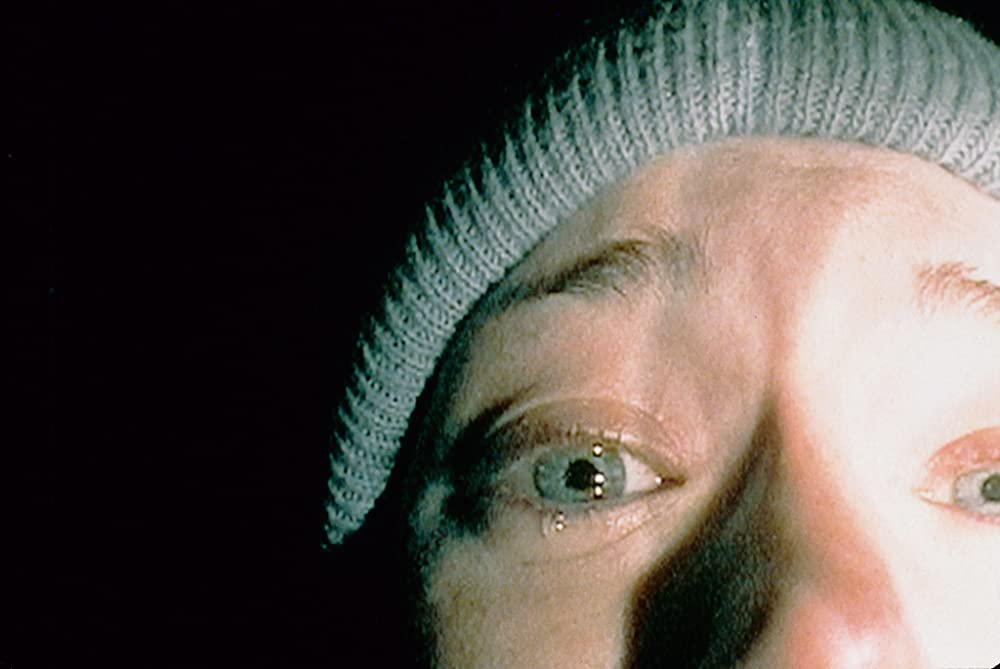
I’ve talked about this 1999 smash hit before, but it’s not only a perfect introduction to found footage horror, but it scares the viewer without showing anything directly frightening. In fact, even many horror fans have found themselves disappointed by how little they actually see. The film centers around a group of friends who go into the woods searching for an urban legend known as the Blair Witch, until they get lost, see and hear things that don’t add up, and grow increasingly more at odds with one another.
What makes The Blair Witch Project so scary is that, while you never see anything or even know if the Blair Witch is real, you’re still concerned that these characters may tear themselves and each other apart long before any monster gets to them. Imagine the primal fear you’d feel if you were lost in the possibly haunted woods. Whether you were in any real danger or not, you’d be terrified. That’s where this film’s scares come from, and it’s captured perfectly through the found footage lens that makes you feel like you are in such a situation. If you avoid horror because you’re afraid of what you’ll see, you may appreciate The Blair Witch Project for instead making you fear what you don’t see.
2. PARANORMAL ACTIVITY (2007)
Possibly the most well-known found footage horror film of all time, Paranormal Activity follows the couple Katie and Micah (Katie Featherston and Micah Sloat), who are trying to use cameras to find evidence of a supernatural presence in their new house. Paranormal Activity contains more on-screen scares than The Blair Witch Project, but the frights are still very minimalist by design. You’re in for little more than simple door slams, moving objects, and even someone just standing still unnaturally … but it’s the presentation that makes these events terrifying.
This movie lets long stretches of silence get in your head and never lets up from the raw, personal filter through which you’re watching everything. If you can’t handle explicit blood or frequent jump-scares, but can handle constant, droning, prolonged tension, this is the horror movie for you. Your sense of helplessness only doubles as the couple becomes almost as antagonistic to each other as the demon. Micah’s incessant desire to solve everything himself only ends up making the situation worse, and the conflict that arises between him and Katie makes everything even more maddening. Paranormal Activity is the farthest thing from flashy or extreme, but it’ll still scare you in the most essential way horror should.
3. HALLOWEEN (1978)
Read also: All Halloween Films Ranked (From Worst to Best)

Every time I talk to someone who hasn’t seen the original Halloween, they’re surprised when I tell them that it’s not some big, crazy splatter-fest and that the kills and body count are rather minimal. While many assume that Halloween is as extremely violent as other slashers like Friday the 13th or A Nightmare on Elm Street, it’s actually one of the most restrained, patient, and tension-driven slashers you’ll ever see. Though the film is about the mysterious Michael Myers (Nick Castle) going on a killing spree in Haddonfield, Illinois, the scares don’t come from when he strikes; they come from you apprehensively wondering where he is and when he’ll strike.
The film’s scariest scene for me has no killing at all. It’s just Michael stopping his car after the main characters taunt him, and the few seconds of you wondering what he’s about to do in response. He ends up just driving away, but the anticipation of scenes like that is what drives this film’s scares, not the kills themselves. Even when characters are killed, it’s really not that bloody or excessive at all, and there aren’t that many deaths in the first place. And yet people still come away terrified of Michael because his omnipresence in the film leaves that big an impact on them. That’s why Halloween is regarded as a genre-defining classic even today, and it’s what makes it one of the most accessible slashers out there for non-horror fans.
4. THE HAUNTING (1963)
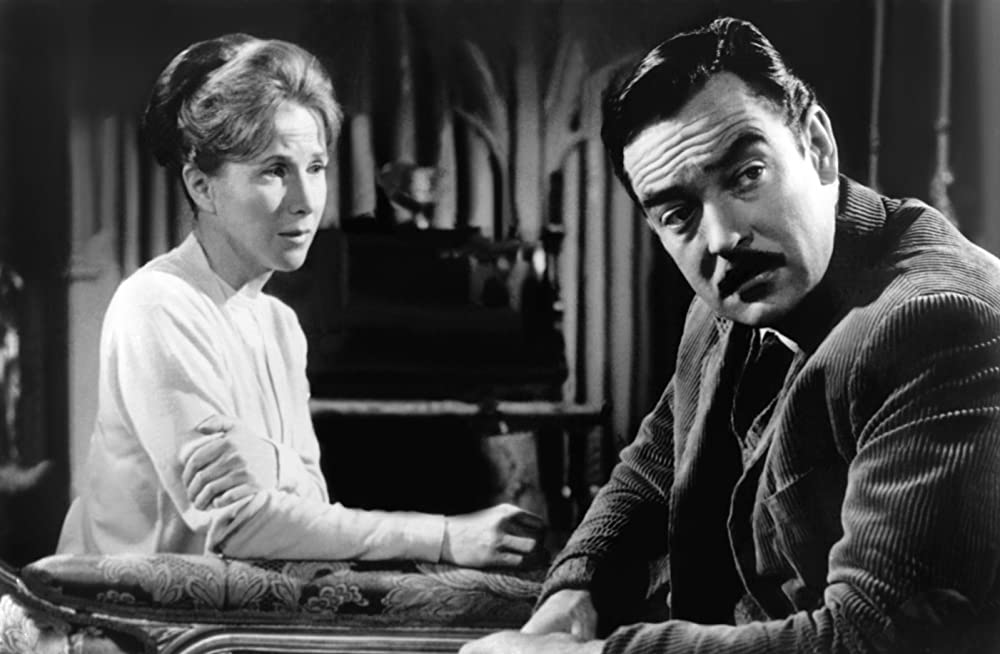
The Haunting may be a haunted house story, but it runs with the idea that the only things to fear inside the house are also inside the characters’ minds. A team trying to prove the existence of ghosts investigates a supposedly haunted mansion. This team includes a woman named Eleanor (Julie Haris), who finds herself increasingly drawn to the house… possibly because the house is putting her under some kind of spell. Or it may be because she’s succumbing to her own psychosis. The film thrives on that ambiguity, which should implicitly tell you how little on-screen frights there actually are in The Haunting.
You’re instead unsettled by Elanor’s mental instability and her increasingly spastic decisions, and even the few “traditionally” scary sequences are pretty much G-rated… literally, because The Haunting is rated G. While that rating doesn’t have the same meaning now as it did back then, it should still tell you how digestible and low-key this film is. You may not even be scared by The Haunting at all, but you’ll still have the intriguing psychological study to keep you engaged. It’s a safe bet that you’ll get a well-told story dripping in gothic atmosphere that’s perfect for Halloween, with horror that only goes as far as your mind lets it.
5. THE INNOCENTS (1961)
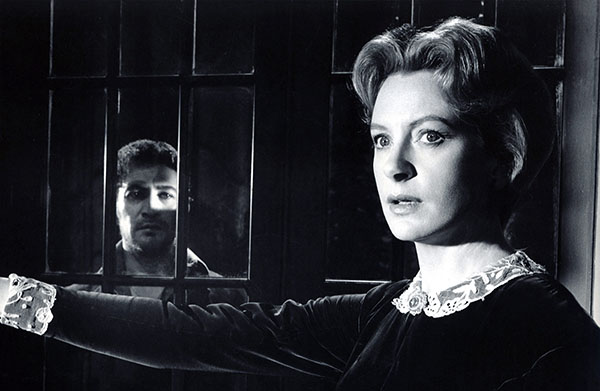
The potential appeal of The Innocents to those scared of horror is similar to that of The Haunting or The Blair Witch Project: you’re almost entirely afraid of what you can’t actually see. Based on the famous novella “The Turn of the Screw,” the film centers around a young governess (Deborah Kerr) for two children who becomes convinced that the house, grounds, and eventually children, are haunted. Are they actually haunted? Similarly to The Haunting, that’s for you to decide. Both the film and the novella are among the most famous and effective ambiguous stories of all time, sparking decades-long debates as to whether the governess is being haunted by the supernatural or by her own mental state.
There’s almost no disturbing imagery to be found outside of a few creepy-looking people standing around, but you’ll be greatly upset the more you think about the implications of what’s going on, no matter what you think the true answer is. Neither possibility is in any way pleasant, but the film keeps the frights so driven by mood and intellect that both possibilities are viable. Like several films on this list, The Innocents will scare you not by showing you something disturbing, but by letting you be disturbed by however you choose to fill in the gaps.
6. INVASION OF THE BODY SNATCHERS (1956)
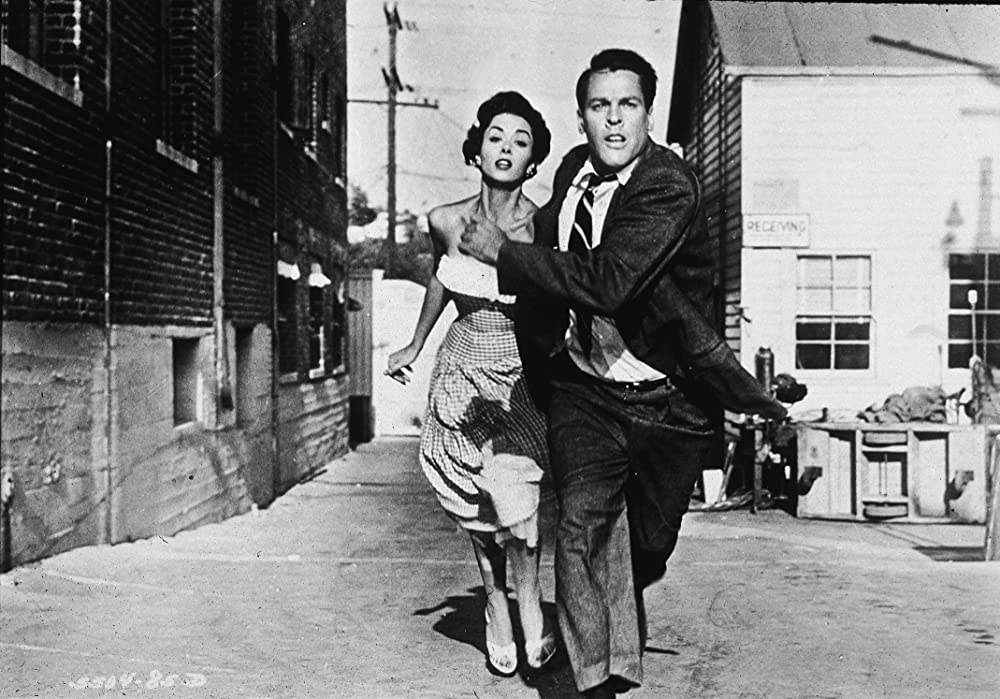
Though it’s more straightforward and closer to a conventionally scary movie than The Haunting or The Innocents, the original Invasion of the Body Snatchers is very mild in terms of any grotesque visuals it throws your way. The concept alone is inherently scary: a doctor (Kevin McCarthy) learns that the people of his town have been replaced by identical, emotionless alien copies, and he must escape with his ex-girlfriend (Dana Wynter) to get help. With a concept this clever and universally relevant, it’s no surprise that both the 1956 original and its 1978 remake are considered horror classics.
But while the remake is more extreme in its imagery, the original Invasion of the Body Snatchers keeps the horror simple, which should make it easier for those scared of horror to get through and let them focus more on the characters and the creepy scenario. The symbolism and commentary practically write themselves no matter when you watch this movie, from the Communist fears of its time to the cult-like political allegiances of modern day, and there are plenty of thrills as the chase grows more desperate without going overboard. It’s a spine-tingling experience that should make most people feel uncomfortable but not overwhelmed.
7. MISERY (1990)
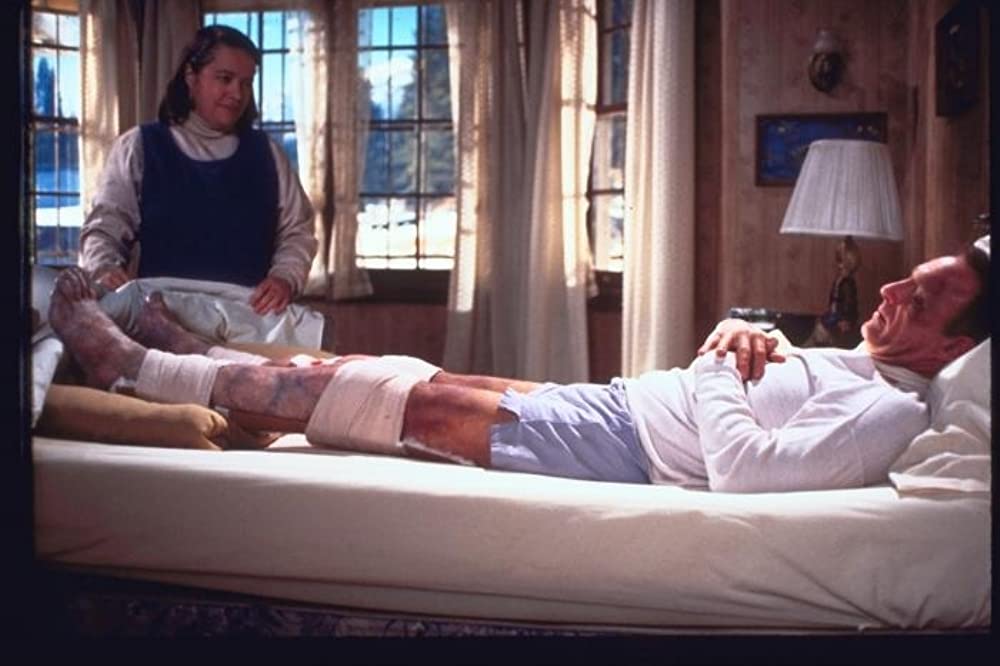
Misery is another film where the premise speaks for itself in what makes it so perfect for a horror film: a famous writer (James Caan) gets in a car accident and wakes up in the care of insane fan Annie Wilkes (Kathy Bates), who holds him captive until he rewrites one of his upcoming stories to her liking. From the second Annie reveals her true self, you’re desperately hoping for the writer to get out of there, and you’re terrified at the notion of Annie catching him trying to escape. I actually found myself physically shifting in my seat to check for Annie around the corner as he snuck around the house. Again, that’s the sort of scariness that requires nothing gruesome at all to put you on the edge of your seat.
Kathy Bates gives one of the scariest performances of all time, made even worse with how you never know when she’s going to go from quiet and docile to screaming and angry. There are two violent scenes in the film, but one of them has the most disturbing aspect out of frame and the other is not only not that severe, but you’ll be so invested in the main rivalry at that point that you’ll probably be willing to stomach more than usual to see how it plays out. Misery knows how to keep the character-driven tension dialed up little by little from start to finish, and that should be more than enough to draw in all but the most anti-horror crowd.
8. THE NIGHT HOUSE (2021)
The Night House is another film I’ve talked about before, but it’s worth bringing up again for being not only another horror film that has broader appeal for people scared of horror, but a rare recent horror film that meets that criteria. The film, centered around a woman (Rebecca Hall) who lost her husband (Evan Jonigkeit) to suicide and begins experiencing strange events in their secluded lake house, is only a year old, but it has an old-school way of getting under the viewer’s skin. It lets you bask in the main character’s anguish and slowly, patiently makes you paranoid about what could be hiding around any corner of the house, whether something’s actually there or not. Very little actually pops out to scare you in the conventional sense. The focus is on Hall’s character and her psychological crisis that gets worse the more she learns about her late husband and how his secrets connect to this haunting.
When you do learn what’s been going on, it’s admittedly a little over-the-top, but it still commits to how a traumatic experience in her past has plagued her conscience. But it isn’t a violent or shocking kind of traumatic experience. In keeping with the film’s subtler scare tactics, it’s disturbing purely on an emotional level. The Night House is the rare modern horror film that does away with extreme imagery or loud frights, instead giving you the frights in a more subdued way that requires more thought to really appreciate.
9. PSYCHO (1960)
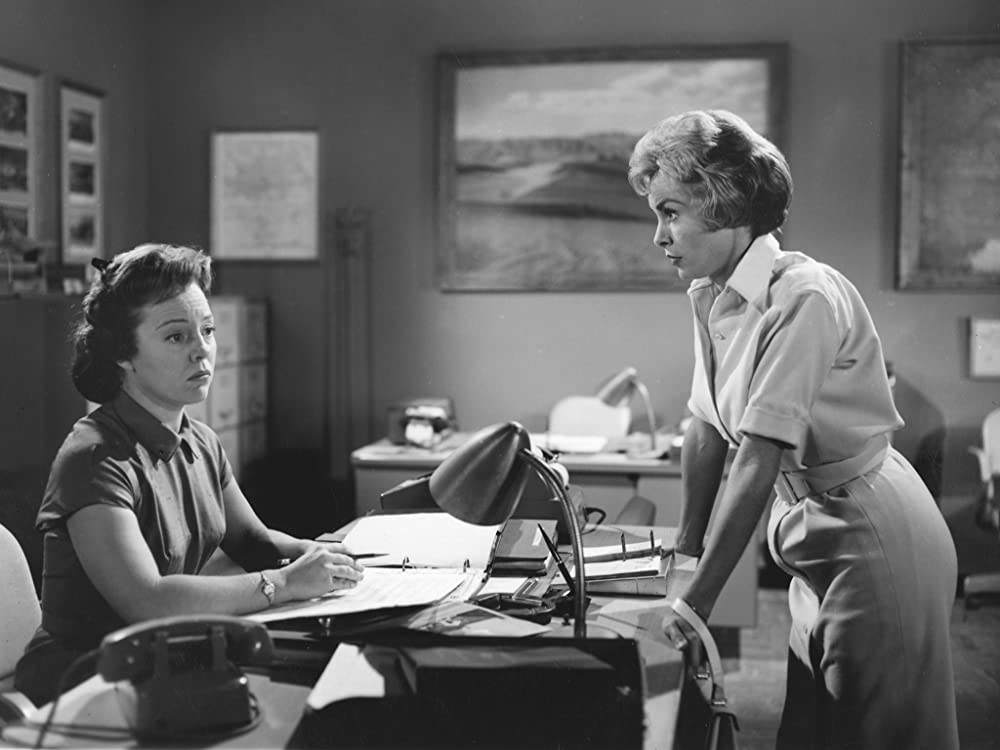
What can I really say about the merits of Psycho? The film, centered around a fleeing embezzler (Janet Leigh) who meets a shy motel owner (Anthony Perkins) and mysteriously disappears, is one of the most iconic, celebrated classics of all time, the most famous film of one of the most famous directors. All of its praises are fully warranted, but with such an infamous, shocking reputation, I again surprise people when I tell them how tame it actually is by horror standards. There’s very, very little actual violence in the movie, and even the film’s most infamous sequence is almost completely bloodless and even fake-looking (but the shock of what’s happening still sells it completely). In fact, when watching first half of Pyscho, you may not even realize it’s a horror film at all if you don’t know its reputation going in.
Like Halloween, it’s the waiting for things to go wrong and the buildup to what may or may not happen that sell Psycho’s horror. Except here, you’re not even sure what the danger even is, adding a mystery to the story whose answers leave you completely blindsided in the juiciest way possible. It may have been controversial at the time, but it’s one of the safest horror experiences you could possibly get on the surface, while being one of the most impactful by the time its finished. The brilliance of its writing and directing is why it still gives people the chills today, which is why Psycho continues to thrill audiences and appeal to more than just the horror crowd.
10. ROSEMARY’S BABY (1968)
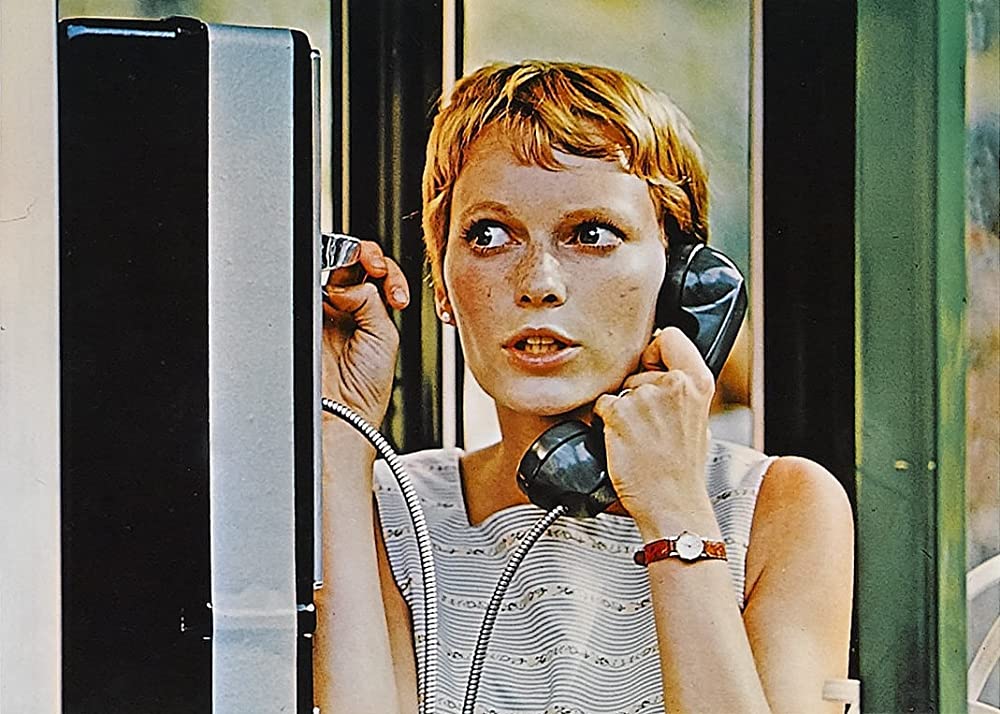
Rosemary’s Baby is another iconic classic, and another horror film that achieves a lot without using almost any overtly scary sequences at all. Every creepy element comes from the inherent sickliness of its premise: Rosemary (Mia Farrow) and her husband (John Cassavetes) move into an apartment and soon are expecting a child, but Rosemary begins to suspect that their neighbors are secretly grooming her to use her baby for some evil purpose. When you see how the people around her try to control nearly every aspect of her pregnancy, from what doctor she sees to what medicine she takes, the disgusting parallels to real-life women’s issues, especially given events of this past year, speak for themselves. The film knows this and doesn’t throw in anything else to try and scare the viewer. It understands that this concept is freaky enough, and it builds your suspicions towards the neighbors in the subtlest of ways.
There are no visually upsetting rituals or on-screen brutality, outside of one dream sequence that’s easy to close your eyes at until it passes (though I don’t think you’ll need to). Rosemary’s Baby is very minimalist and grounded in reality, even when a more supernatural reveal rears its head. I believe almost anyone could get through the film fine as long as they’re willing to watch a woman go through the kind of injustice and suffering that, again, isn’t too far removed from what a lot of actual women have to deal with. Like most films on this list, it’s the terrors of the mind, and the fear of what has to be felt and not seen, that make Rosemary’s Baby the horror classic that it is.

